Epilogue and Epitaph of a Glorious BWR Finish
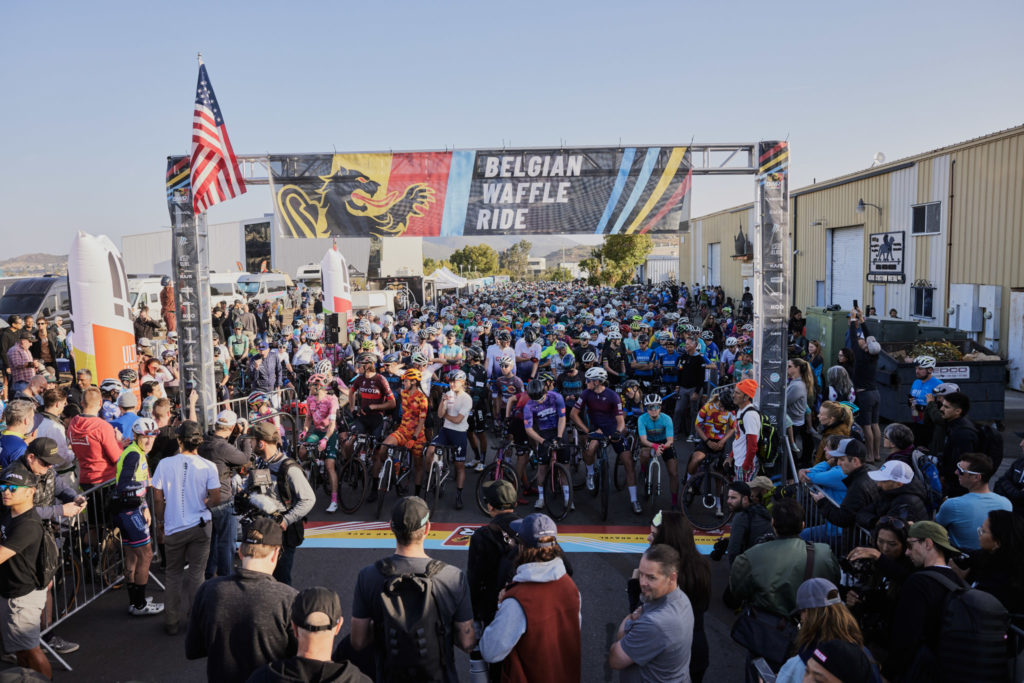
Epiligue an Epitaph of a Glorious BWR Finish
Evolution doesn’t always occur incrementally. Sometimes change is sudden, surprising and painful. The Belgian Waffle Ride has always been different. Different is challenging; it’s new; it’s unique. Then, for 4 years the course did not change substantially. Yes, there were small tweaks but nothing that affected overall strategy or equipment choice. In 2018 the course was king and apex predators need not evolve. Meanwhile, bikes got better...
Bikes developed their ability to ride all surfaces and the term “all-road” became ubiquitous with “gravel riding.” Disc brakes became standard. Tubeless tires ruled the road and wide range gearing became the choice for the masses. Suddenly the locals were training on the legacy BWR sectors, sometimes breaking Strava KOM’s of established superstars. “All-road” bikes had normalized the Belgian Waffle Ride. Normal is not different.
However, many of us forget that events can evolve too and the Belgian Waffle ride is no stranger to evolution. Evolution can be thought of as a series of changes that enable the host to more effectively resist being overcome. The BWR made some changes and the results were extraordinary.
On paper the new course looked similar to other recent versions. 2021’s version showcased 133 miles with 10,000 ft of climbing while 2022’s marquee boasted 135 miles and 11,000 ft elevation gain. Looks can be deceiving and judging a ride by its profile is a mistake many athletes make. Unlike UCI Monument races the BWR is not bound by protocol or tradition and there seems to be a wry smile on the face of Michael Marckx (founder) when he hears that the course is “too hard.” And Marckx has undeniably leveraged the terrain, topography and the selfish nature of competitive cyclists to ensure that everyone has an experience they’ll remember forever.
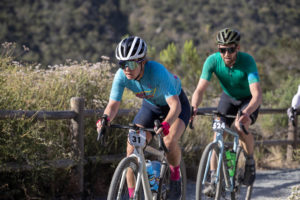
The new course plays into both your strengths and weaknesses to ensure you walk that fine line between struggling to the finish line and calling an Uber to take you home. Historically, there has been a substantial neutral roll out. 2022 replaced that with a manic four miles of complete red-line mayhem that made a mark on the Strava KOM leaderboards. During these first few minutes, drafting was necessary for survival. The following 2.6 miles propel you seemingly and literally into the clouds as you climb for over 15 minutes without the benefit of a draft only to drop like a stone for the next 4 miles at a speed resembling shuttle re-entry but on mixed terrain (all-road?), negating any benefit of a draft. Finally respite as you traverse the next 11 miles on rolling pavement. This is the first opportunity to effectively hide in a draft, if you can assemble a group of like-minded riders.
The next part is crucial to the effort for every rider. Riders are confronted with 20 miles of uninterrupted dirt singletrack and doubletrack that takes well over an hour to traverse. During this time drafting would be beneficial but the advantage afforded line of sight outweighs energy savings unless one is willing to take the risk. But remember that a flat tire rolls very slowly.
Exiting the 20-mile-long sector of dirt, riders find themselves scattered over minutes and miles across the San Diego countryside. They also find themselves at the base of an intimidating 8.75 miles of near constant climbing. Climbing minimizes any effective drafting and is notorious for splitting groups. This will prove no different.
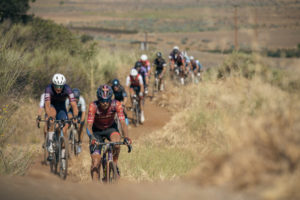
Summarizing the first few hours could be done by stating that the first 50 miles of the BWR contain only 11 miles where drafting provides any strategic or tactical benefit. The implications of racing the opening miles of the BWR flat-out will severely impact everyone all day long.
To conquer the Belgian Waffle Ride requires attributes both as an individual and as a community. Marckx emphasized community togetherness in 2021 (or 2019). Little did we know how that would serve as foreshadowing for 2022. Individual attributes are known and more easily quantified and controlled (fitness, food, hydration, equipment, etc.). Community help is more difficult to quantify and persuade.
During each BWR Survival Camp we spend a good deal of energy and discussion stressing the importance of assembling a group on the road to help each other get through the day. Ideally a group should be relatively matched in fitness, skill, and positive vibes. To make it work everyone will have to ride a little slower or faster than their preference at times but the end result is that your speed for entire day is notably faster.
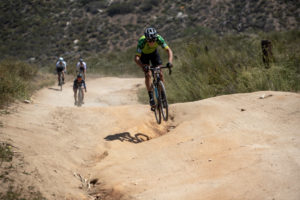
But the crux of this concept is more nuanced because it’s still a race and every place matters. Mentioned before was that in these types of monuments, deciding moments of the race usually take place where the surface is decidedly unfriendly. This scenario arises most commonly on dirt or uphill which make up the vast majority of the first 50 miles of the Belgian Waffle Ride. Pummeling your competitors early in the BWR presents a false choice for the rider as the fatigue from the effort will not dissipate until the day is done. The course is long enough and hard enough that everyone should consider how to reduce early fatigue in order to ride faster all day long.
But we are competitors and backing off the throttle in a race is counterintuitive, so we press on. And we press ever harder into a course that is harder still. The results are telling of the interplay between these factors.
I’ll use the men’s results simply because the larger sample size provides a more accurate representation and combined results are not easily available for 2021 vs 2022. These findings cannot be extended to women.
2021 Winner Time: 6:12
2022 Winner Time: 6:35
This shows the pointy end of the race was slower than 2021. Not easier, just slower. There are lots of reasons for that and easy is not one of them.
Interesting side note: If you apply a “generous” UCI time cut of 20% and compare male athletes within that cutoff who completed both 2021 and 2022, ONLY Alexey Vermeulen had a faster finishing time in 2022 vs 2021.
Median (middle) Finisher:
- 10:11
- 10:36
The middle of the pack finisher was affected by about the same amount of time as the winner. 23 vs 25 minutes. Remarkably consistent.
Most finishers (68% or 1 standard deviation of the median) finishing range:
2021: 8:18- 11:42. (3:48pm- 7:12pm)
2022: 8:55- 11:59. (4:25pm- 7:29pm. Sunset is 7:29pm)
Roughly 16% of the riders finished after sunset. It’s doubtful any of them ever thought of that as a possibility.
The results don’t tell the whole story. Marckx states that there was a higher attrition rate in 2022 (over 40%) than in recent editions of the BWR. Many of these DNF/ abandons are simply not listed in the results. There are many reasons to abandon but the most common reason is that “it was simply too hard.” It’s entirely plausible that we as competitors got complacent in our preparation. We became comfortable with the status quo and no longer had a healthy fear of the BWR. That complacency would come back to bite many riders as the Belgian Waffle Ride has once again risen to the status of apex predator.
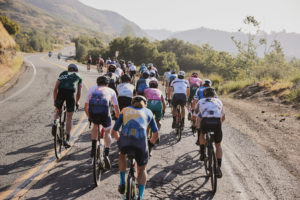
Finally, I’ll leave you with these bits of advice:
- Expect this Unroad Race evolution to permeate through all the BWR events. Marckx brings his diabolical A-game to each and every BWR. You should too. Get comfortable being uncomfortable.
- Redouble your efforts to be as prepared as possible. If you’re not sure how, check out some BWR training plans. If you’re ready to level up try our individual coaching packages.
- This evolution was not a surprise to everyone. The BWR Survival Camp saw the course in January. Through a long weekend of course recon and professional preparation our campers completed the BWR at +95% success rate.
Thanks for reading.
 About the author:
About the author:
Adam Mills has raced at the elite level since 2002 and graduated with a Masters Degree in Exercise Physiology from the University of Kansas in 2005. His true talent comes with his ability to combine his vast experience with his knowledge of sport. He is indeed a student of science, sport, athletic performance, strategy, and tactics. He continuously educates himself by keeping up to date with current research trends and methods in sport and his clients have reaped the benefits from this work with over 22 national championships in 11 disciplines on two continents. Adam is able to incorporate these attributes on a daily basis to help his clients reach and exceed their goals whether they are a beginner or a seasoned professional.
